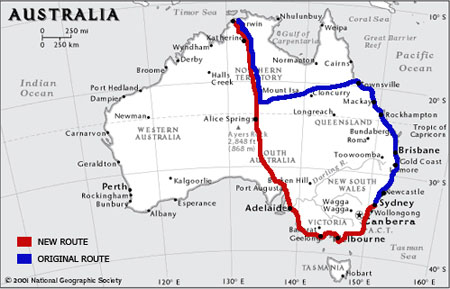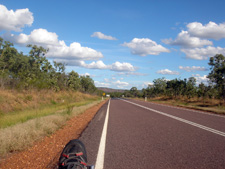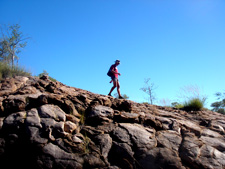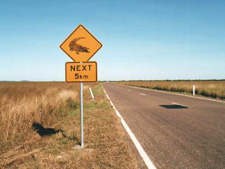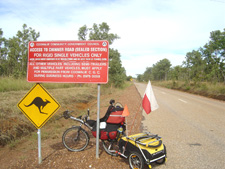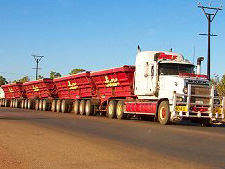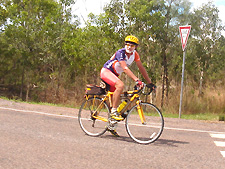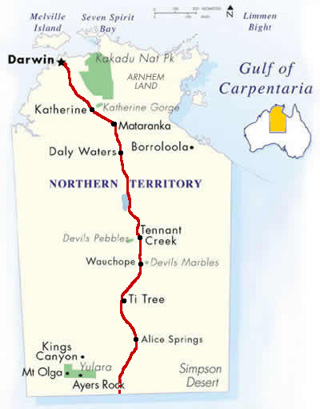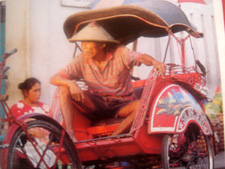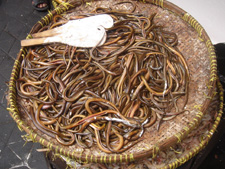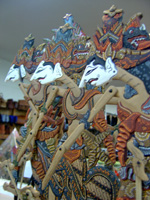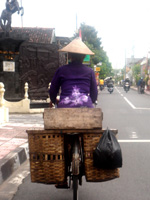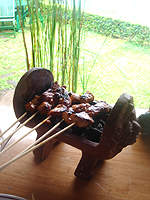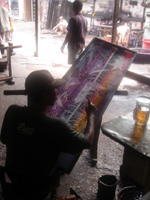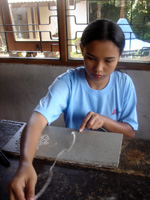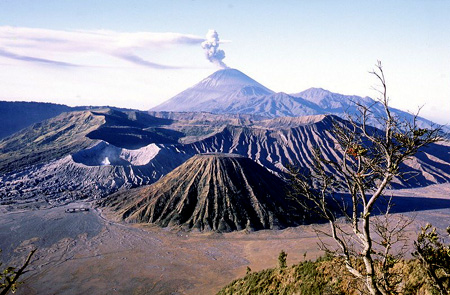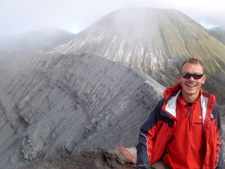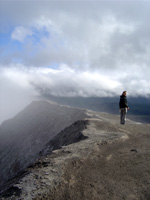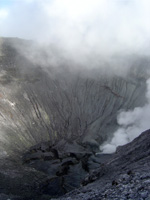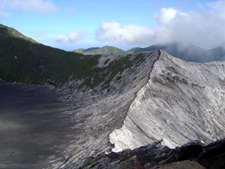By the time we reached Bali we realised that we would have to depart Indonesia from here, as our visa would expire in the next 7 days and the ferry frequency would leave us ‘visa-less’ in either Flores or en-route to Timor. We had heard that there was a cyclone in Northern Australia (which means no cycling) and resigned ourselves to the fact that it was 1. safer to stay in Bali and more importantly, 2. cheaper!
We felt rather out of place when we arrived, everyone spoke Australian (even the locals mimicked the accent!) and most guys were going around bare-chested!! Gone was the reserved dress-codes of the rest of Indonesia and in its place, a definite hedonistic surfing haven. We saw far too many people wearing ‘tasteful’ t-shirts with slogans like “F**k you, you f**king f**k” (no Scott we didn’t get you one!! :p) and we saw some truly stomach-churning tattoos, piercings, shaggy braided hairstyles, and sagging bellies. Food is also dramaticaly more expensive compared to the rest of Indonesia – though still cheap by western standards.
Thankfully, there was a lot to explore in Bali other than the surfing beaches which kept us occupied for a week. Plus a decent internet cafe to while away too many hours updating this blog :p
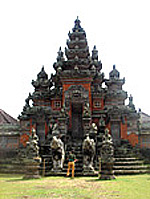
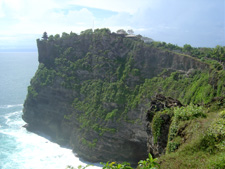
We saw many amazing temples, one of them with carvings depicting the Dutch arriving by bicycle (in floral shorts!!), cars, boats, and planes, and disturbing the local traditions in colonial times. In one temple we got attacked by two monkeys – before we could stop them they made away with Nic’s sunglasses and Sedef’s guidebook! We spent the next 10 minutes chasing the monkeys around the garden and up trees to get our things back – much to the amusement of the locals. We also saw some amazing landscapes, going for walks around the terraced rice paddy fields, which was a nice escape from the hustle and bustle of the rest of Bali. In Kuta, we took a moment to contemplate the 200 people who died in the 2002 terrorist bombing in Kuta – a memorial with the names of those who died now stands on the site of the club which was targeted.

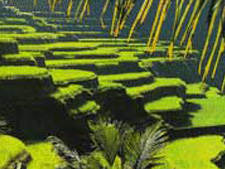
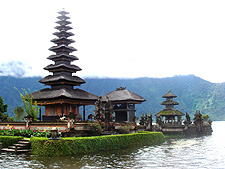
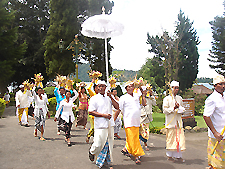


There is a distinct difference between Bali and Java/Sumatra. Indonesia is predominantly Muslim, while Bali is mostly Hindu, then there is the western influences brought on by the tourist trade and almost inescapable anywhere on the island. Touts are on every street corner and even on motorbikes when you pull up to the traffic lights. We now know what to expect when we hear the opening line of “Brother, I’m not trying to sell you anything, but…”. We saw and almost bought a couple T-Shirts stating “No, I don’t want a f***king motorbike / taxi / t-shirt / sarong / dolphin / inflatable hammer etc.”
Exploring the island, we visited the artisan villages famous for their paintings, wood and stone-carvings, and ceremonial masks. The majority of workshops all use traditional methods to create their masterpieces, though cheaper abstract and modern art seems to be the ‘in’ thing at the moment. Anything you could possibly want in the way of handcrafts are available in Bali, even ‘antiques made to order’!!! :p

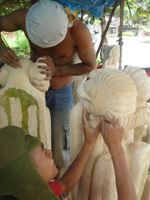

We scoured the art galleries of Ubud until we found one painting that was amazing (the tribal worship picture below), similar to one we saw in Jakarta and by the same artist. We were going to buy it, if only the price tag was slightly lower (it was 150million Rupiah – a coffee is 5,000 rupiah). Unfortunately we had picked probably the most expensive painting on the whole island – it was painted by a famous Indonesian painter and a real collectable. We contended ourselves with a photo of it – thanks to the sympathetic gallery owner.
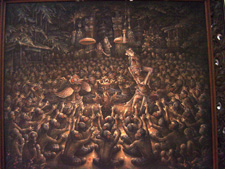
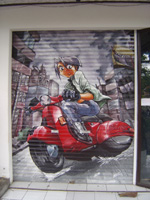
We paid a visit to the harbour, to find out if there were any commercial cargo freighters to Darwin – where we were informed that all international shipping went to the port of Surabaya in West Java. This decided the fact that we would have to fly to Oz now… Australia here we come!


